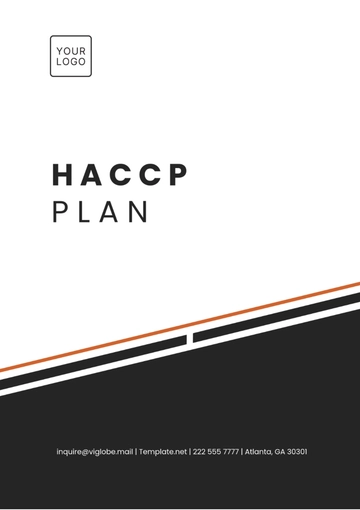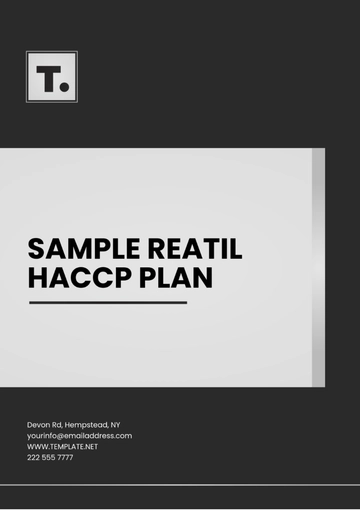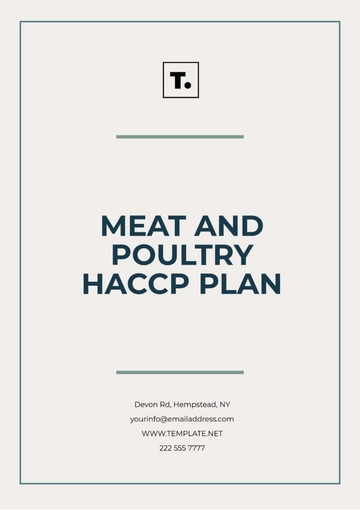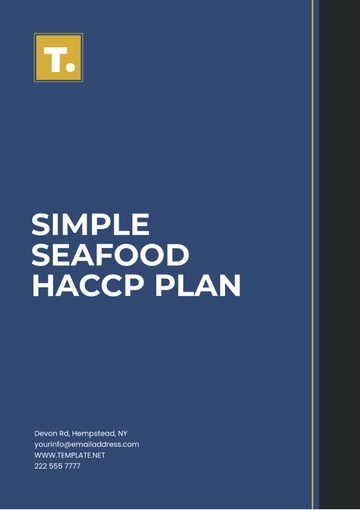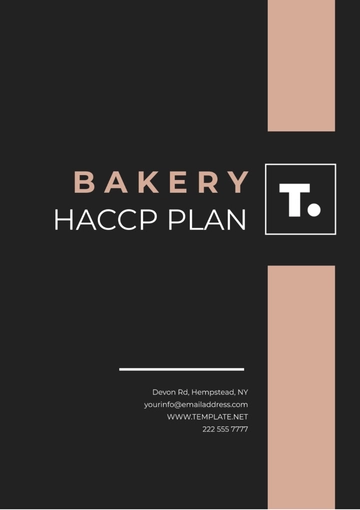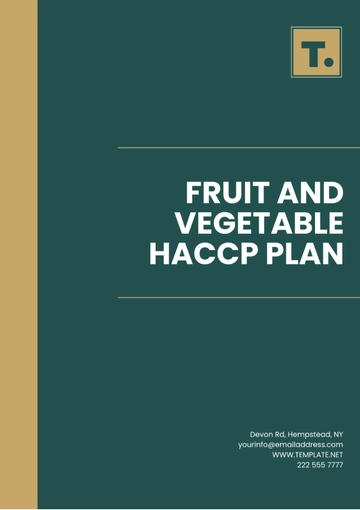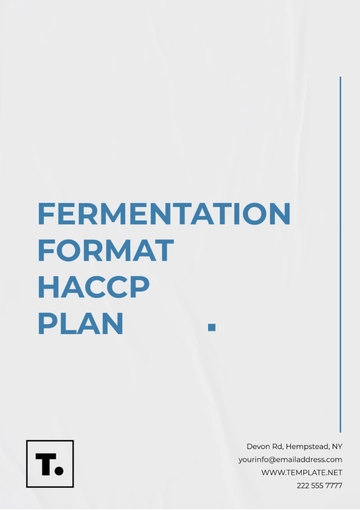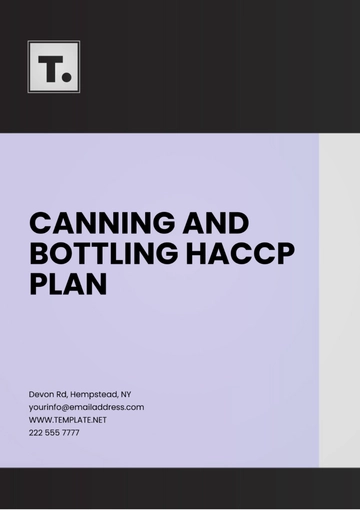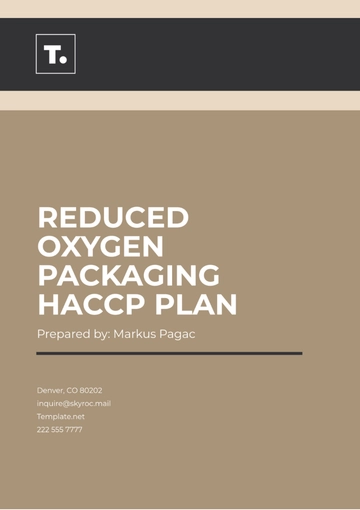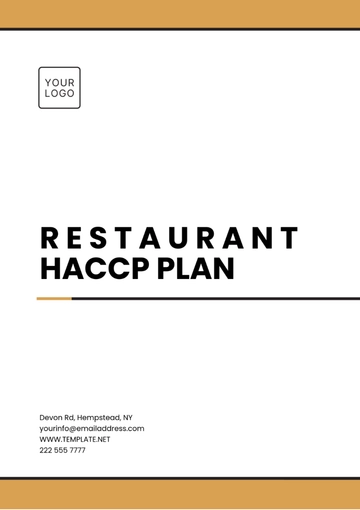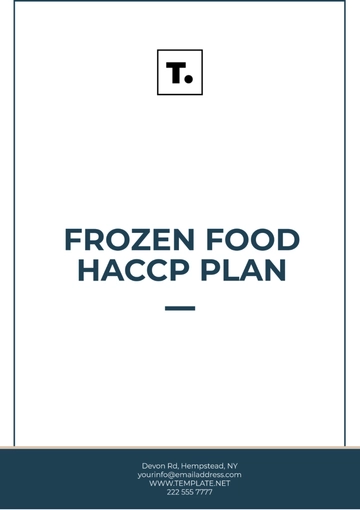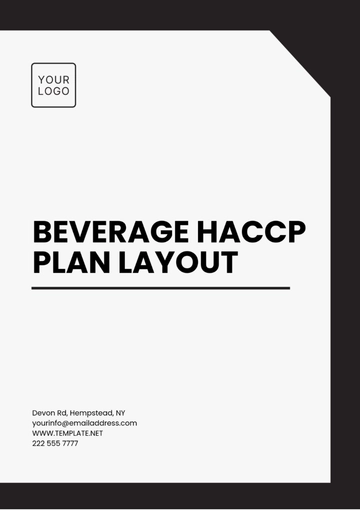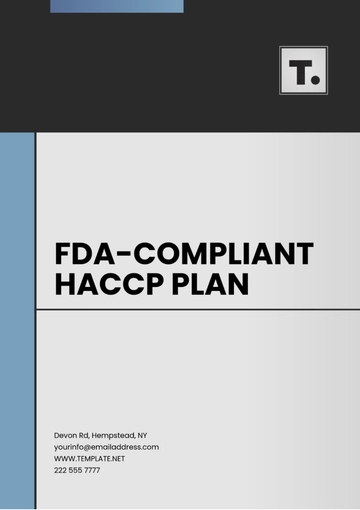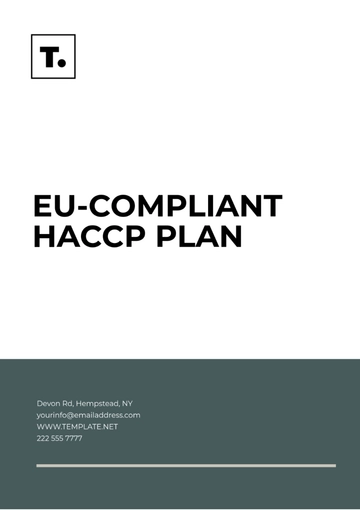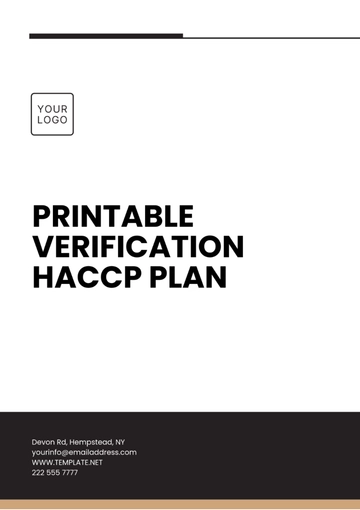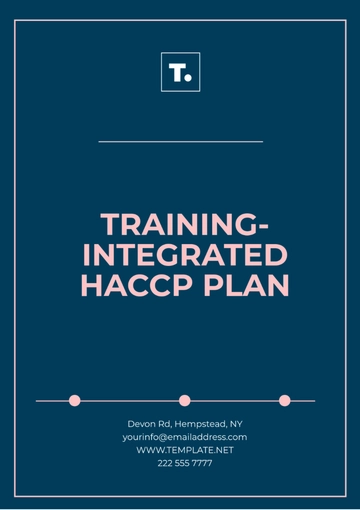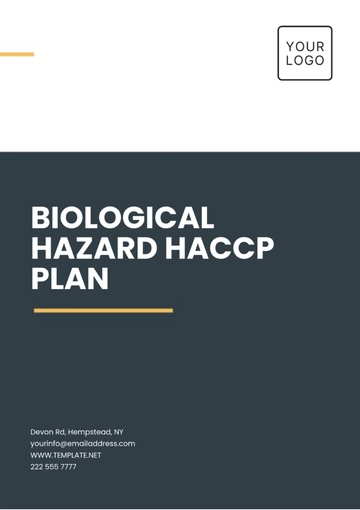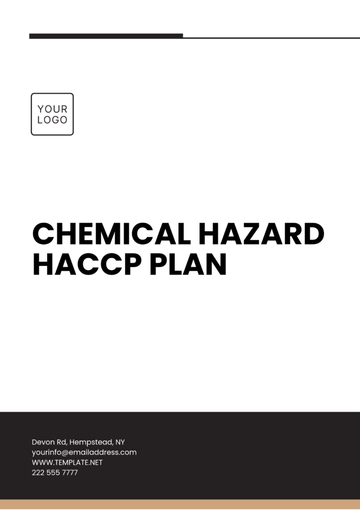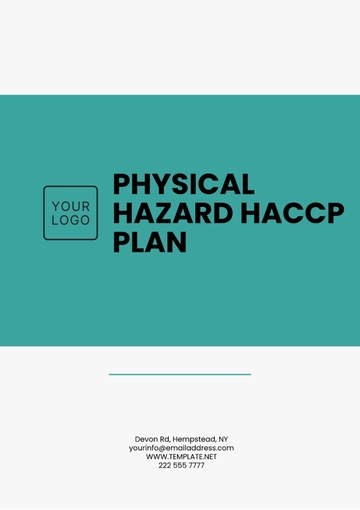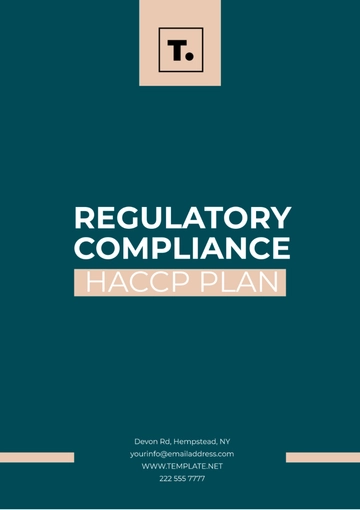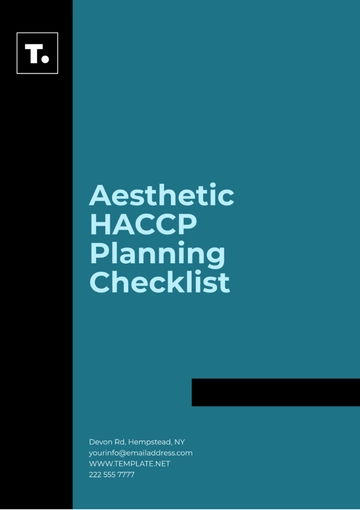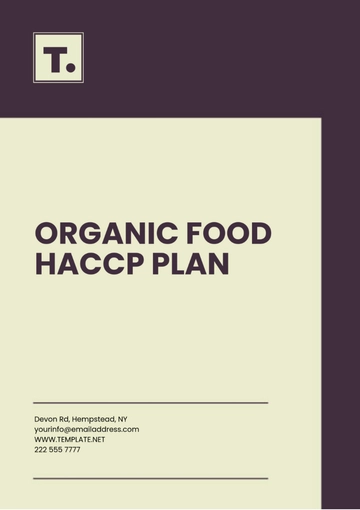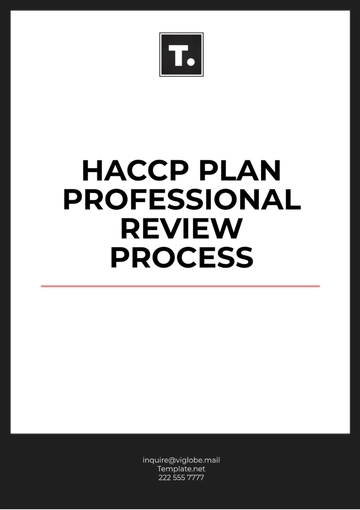Free Sample Retail HACCP Plan
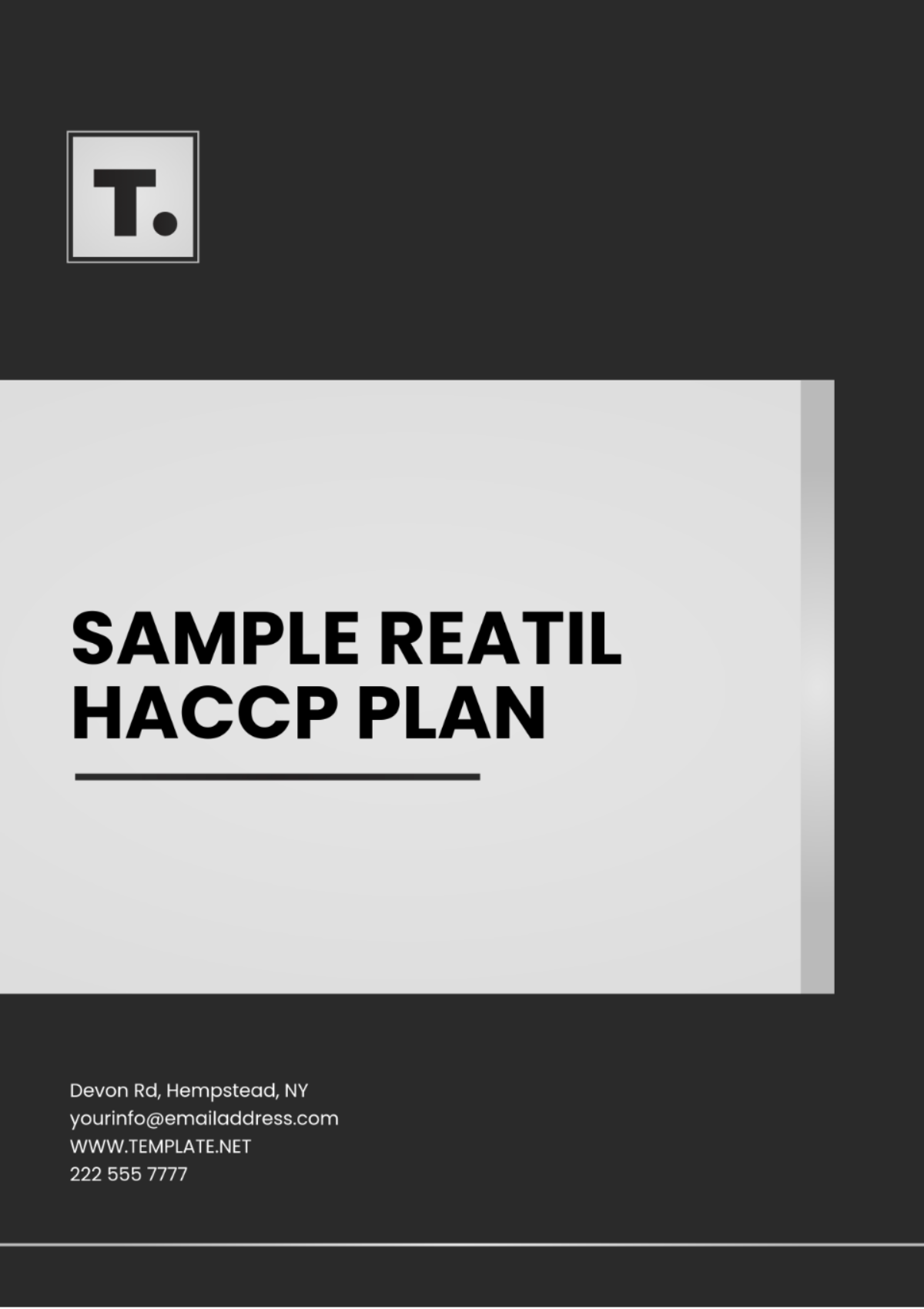
Date: March 5, 2060
Prepared by: [YOUR NAME]
I. Introduction and Scope
This HACCP (Hazard Analysis and Critical Control Points) Plan is designed for retail food businesses to ensure food safety from product receipt to sale. It covers all steps in the retail food process, focusing on identifying critical areas where control is necessary to prevent food safety hazards. The plan aims to protect consumers and uphold high food safety standards in retail operational processes.
II. Hazard Analysis
The Hazard Analysis evaluates every stage of retail food operations for biological, chemical, and physical hazards. Each phase from purchasing to serving is analyzed to pinpoint where risks may arise, ensuring a thorough approach to food safety.
Purchasing: Risk of obtaining contaminated, expired, or low-quality products due to inadequate supplier standards.
Receiving: Risks include improper temperatures during transit and cross-contamination during the unloading process.
Storage: Inadequate temperature control, excess humidity, or pest infestations could lead to spoilage or contamination.
Preparation: Cross-contamination from raw to ready-to-eat foods, improper handwashing, or unsafe food handling practices.
Cooking: Failing to cook foods to safe internal temperatures, allowing harmful pathogens to survive.
Serving: Food can become unsafe if it is not maintained at the correct temperature or if it is handled improperly.
III. Critical Control Points (CCPs)
CCPs are specific points in the food handling process where controls are essential to prevent, eliminate, or reduce food safety hazards. Below are the critical control points for this retail HACCP Plan:
Receiving: Inspect and verify the temperature and quality of food products upon delivery to ensure compliance with safety standards.
Storage: Maintain appropriate refrigeration and storage conditions, monitoring temperature and humidity to avoid spoilage and contamination.
Cooking: Ensure food is cooked to the correct internal temperature, based on food type, to eliminate pathogens.
Hot Holding: Keep prepared food above 60°C (140°F) to prevent microbial growth during holding periods.
IV. Monitoring Procedures
Effective monitoring ensures that CCPs are consistently controlled. The following procedures are implemented at each CCP to maintain food safety:
Receiving: Measure and document the temperature of perishable items upon delivery and check for visible signs of contamination or damage.
Storage: Monitor and record storage temperatures twice daily to ensure cold or dry goods are stored correctly. Check for any signs of pest activity.
Cooking and Holding: Use calibrated thermometers to regularly check and log the internal temperatures of food, ensuring they meet safe cooking standards.
V. Corrective Actions
When a CCP fails to meet the required standards, immediate corrective actions are taken to mitigate risks. These actions ensure the safety of the food and the continuation of compliant operations:
Receiving: Reject and document any shipments that arrive with compromised temperatures or quality, and notify the supplier.
Storage: Adjust refrigeration or storage settings as needed. If spoilage occurs, dispose of affected goods, clean storage areas, and document the corrective action.
Cooking: If food does not reach the required internal temperature, continue cooking until the correct temperature is achieved. Record corrective actions and recheck temperatures.
VI. Verification and Validation
Verification ensures that the HACCP system is functioning as intended, while validation confirms that the system effectively controls hazards.
Verification: Conduct regular internal audits of monitoring practices and CCP controls to ensure compliance with the HACCP plan.
Validation: Annually validate the HACCP system through microbial testing, food safety trend analysis, or external audits to ensure the plan remains effective and up-to-date.
VII. Record Keeping
Accurate and organized records are critical for tracing food safety performance, proving compliance, and preparing for audits. Below is a summary of essential records:
Activity | Records to Keep |
|---|---|
Receiving | Temperature logs, supplier invoices, inspection checklists |
Storage | Temperature charts, pest control logs |
Cooking | Temperature logs, corrective action records |
VIII. Employee Training
Employee training is essential for maintaining food safety across the organization. All staff involved in food handling or safety procedures must be adequately trained:
Annual Training: All employees must attend annual food safety training sessions covering HACCP principles, new safety regulations, and practical implementation.
Onboarding: New employees receive onboarding training specific to their role, focusing on safe food handling practices, CCPs, and the HACCP plan.
Ongoing Education: Refresher courses are conducted periodically, with updates provided on any new industry practices or regulatory changes.
- 100% Customizable, free editor
- Access 1 Million+ Templates, photo’s & graphics
- Download or share as a template
- Click and replace photos, graphics, text, backgrounds
- Resize, crop, AI write & more
- Access advanced editor
Maintain food safety in retail operations with this Sample Retail HACCP Plan Template from Template.net. This editable and customizable template is ideal for ensuring the highest safety standards in retail food handling. Effortlessly document hazard analysis and control measures, and make quick modifications in our AI Editor Tool to keep your plan up-to-date.
You may also like
- Finance Plan
- Construction Plan
- Sales Plan
- Development Plan
- Career Plan
- Budget Plan
- HR Plan
- Education Plan
- Transition Plan
- Work Plan
- Training Plan
- Communication Plan
- Operation Plan
- Health And Safety Plan
- Strategy Plan
- Professional Development Plan
- Advertising Plan
- Risk Management Plan
- Restaurant Plan
- School Plan
- Nursing Home Patient Care Plan
- Nursing Care Plan
- Plan Event
- Startup Plan
- Social Media Plan
- Staffing Plan
- Annual Plan
- Content Plan
- Payment Plan
- Implementation Plan
- Hotel Plan
- Workout Plan
- Accounting Plan
- Campaign Plan
- Essay Plan
- 30 60 90 Day Plan
- Research Plan
- Recruitment Plan
- 90 Day Plan
- Quarterly Plan
- Emergency Plan
- 5 Year Plan
- Gym Plan
- Personal Plan
- IT and Software Plan
- Treatment Plan
- Real Estate Plan
- Law Firm Plan
- Healthcare Plan
- Improvement Plan
- Media Plan
- 5 Year Business Plan
- Learning Plan
- Marketing Campaign Plan
- Travel Agency Plan
- Cleaning Services Plan
- Interior Design Plan
- Performance Plan
- PR Plan
- Birth Plan
- Life Plan
- SEO Plan
- Disaster Recovery Plan
- Continuity Plan
- Launch Plan
- Legal Plan
- Behavior Plan
- Performance Improvement Plan
- Salon Plan
- Security Plan
- Security Management Plan
- Employee Development Plan
- Quality Plan
- Service Improvement Plan
- Growth Plan
- Incident Response Plan
- Basketball Plan
- Emergency Action Plan
- Product Launch Plan
- Spa Plan
- Employee Training Plan
- Data Analysis Plan
- Employee Action Plan
- Territory Plan
- Audit Plan
- Classroom Plan
- Activity Plan
- Parenting Plan
- Care Plan
- Project Execution Plan
- Exercise Plan
- Internship Plan
- Software Development Plan
- Continuous Improvement Plan
- Leave Plan
- 90 Day Sales Plan
- Advertising Agency Plan
- Employee Transition Plan
- Smart Action Plan
- Workplace Safety Plan
- Behavior Change Plan
- Contingency Plan
- Continuity of Operations Plan
- Health Plan
- Quality Control Plan
- Self Plan
- Sports Development Plan
- Change Management Plan
- Ecommerce Plan
- Personal Financial Plan
- Process Improvement Plan
- 30-60-90 Day Sales Plan
- Crisis Management Plan
- Engagement Plan
- Execution Plan
- Pandemic Plan
- Quality Assurance Plan
- Service Continuity Plan
- Agile Project Plan
- Fundraising Plan
- Job Transition Plan
- Asset Maintenance Plan
- Maintenance Plan
- Software Test Plan
- Staff Training and Development Plan
- 3 Year Plan
- Brand Activation Plan
- Release Plan
- Resource Plan
- Risk Mitigation Plan
- Teacher Plan
- 30 60 90 Day Plan for New Manager
- Food Safety Plan
- Food Truck Plan
- Hiring Plan
- Quality Management Plan
- Wellness Plan
- Behavior Intervention Plan
- Bonus Plan
- Investment Plan
- Maternity Leave Plan
- Pandemic Response Plan
- Succession Planning
- Coaching Plan
- Configuration Management Plan
- Remote Work Plan
- Self Care Plan
- Teaching Plan
- 100-Day Plan
- HACCP Plan
- Student Plan
- Sustainability Plan
- 30 60 90 Day Plan for Interview
- Access Plan
- Site Specific Safety Plan
